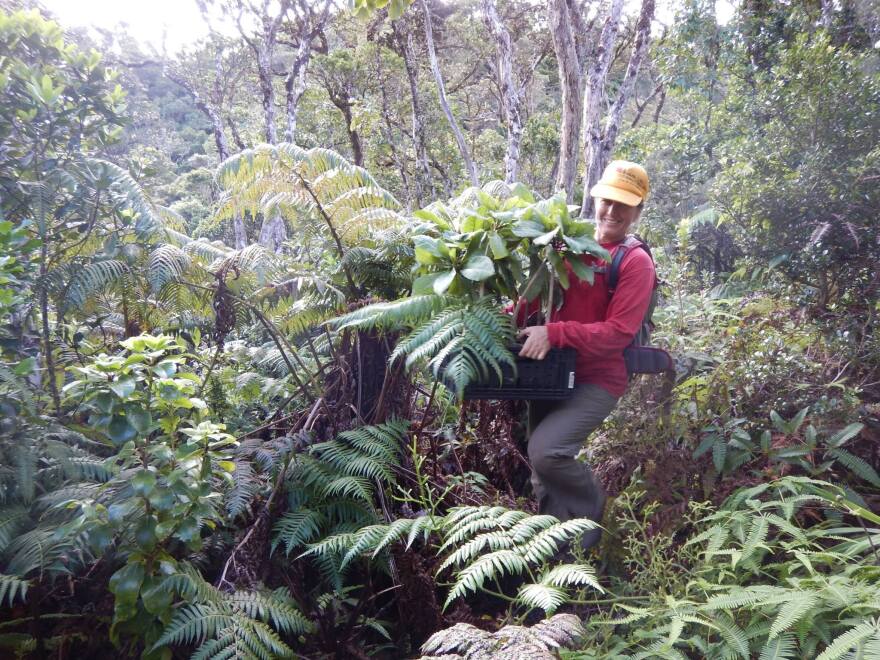A typical day for botanist Ane Bakutis involves finding endangered plants, collecting seeds, and of course, rappelling off some of the tallest sea cliffs in the world.
“I've been in some really hairy situations where I've had to ask myself, is this really worth it to save a species, to save the biodiversity of Hawaiʻi?” said Bakutis.
Bakutis works on Molokaʻi for the Plant Extinction Prevention Program, a joint effort between the University of Hawaiʻi and the state Department of Land and Natural Resources. Several of the endangered species Bakutis works with are found along the sea cliffs of Molokaʻi's North Shore.
“Getting to those species requires, one, flying in a helicopter, finding an appropriate landing area, usually on the cliff, and then rappelling down to those plants,” said Bakutis.

She's acutely aware of the risk involved. “Since I've become a mother, I've been more cautious of what I do, because I would like to come home at night,” said Bakutis. But the hardest part of her job isn't the extreme conditions — it's making due with limited resources.
“A lot of our issues are that we just don't have the facilities or the capacity,” said Bakutis. “So for example, for the last year in a half, we've been dealing with a truck that breaks down every two weeks.”
Getting out into the field is one problem, but there’s a whole other slew of challenges Bakutis faces once she successfully finds a rare plant. Molokaʻi doesn’t have a facility that can propagate rare plants, so Bakutis has to ship her cuttings and seeds to one of the other islands. “And so that adds an added layer of challenge because you never know how long the post office is gonna take to deliver something,” said Bakutis.
If a cutting or fruit sits in the post office over the weekend or a delivery gets delayed, it may mold or deteriorate to the point where it can't be grown again. Bakutis said they strategically plan their collections around the mail schedule. “We're kind of like held hostage to the U.S. Postal Service,” said Bakutis.
For Plant Extinction Prevention Program specialists like Bakutis, such hurdles have always been part of the job. The program's mission to protect over 400 endangered species has become even harder as climate change presents new threats.

A fire burned over 2,000 acres on West Maui last month. Matt Keir, a botanist with the DLNR's Division of Forestry and Wildlife, said this fire signaled a new kind of danger for Hawaiʻi's rare plants.
“This fire made its way up into ʻōhiʻa forest with plant communities that are found in wetter areas of the islands and hadn't seen this kind of wildfire before,” said Keir.
It was weeks before botanists could safely access the area to survey the damage. Keir said it could take years to fully understand what was lost in the fire.
Some days the trucks work, the mail comes on time, and massive fires don’t ravage what’s left of our native forest. But even then, the program still has less than what it needs. Keir said the program has a budget of around a million dollars from state, federal and private funding. They can only target about one-third of Hawaiʻi's endangered plants with that much money.
“So given more funding, we would be able to survey more, monitor, manage, collect more, plant more of the Endangered Species every year,” said Keir.
But while the money lasts, Bakutis and her team will be out there, saving the natural world, one plant at a time.




